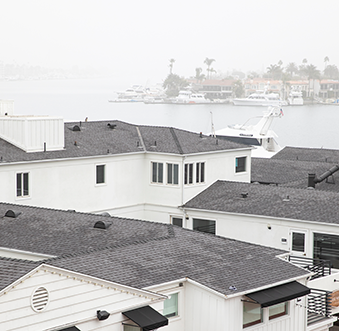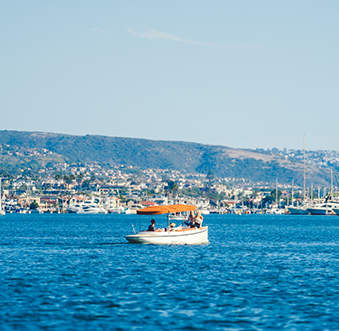In February, I was fortunate to attend a Youth Conference hosted by Orange County Human Relations. I and students from schools across the county attended 3 workshops presented by leaders in their field; ranging from the relationship between sociology and injustice to playlist-making and identity, we had plenty of options to choose from. One workshop that stood out to me was titled “The Tushmaluum Heleqatuum”, The Hummingbirds that Sing: Women of the Acjachemen Nation. I was encapsulated by the storytelling of Adelia Sandoval, a spiritual leader in her community. We participated in a visualization exercise that went something like this: we closed our eyes and pictured ourselves transforming into a dolphin. Guided by Sandoval, we imagined swimming through the depths, feeling both free and relaxed. But my mind began to wander. I started to imagine the plastic pollution in the ocean, the bleached coral reef, and the large cargo ships. I could only focus on the ghostly landscape of bare coral or the iridescent bits of trash blurring my vision. The serene atmosphere melted away, replaced by the horrifying reality of oceanic pollution. I realized that this is the reality for a lot of marine life.
At the Youth Action Council at the Pacific Marine Mammal Center, we have devoted our efforts to learning more about the endangered Southern Resident Killer Whales (SRKWs). While they do not reside directly outside of the Orange County coast, they can teach us vital lessons about environmental protection. After all, every ecosystem is connected: the well-being of the SRKW population does affect marine life here in Orange County.
The population of only 73 killer whales is divided into 3 pods called the J pod, K pod, and L pod. Scientists are able to differentiate between the pods by their distinct calls using bioacoustics. Interestingly, the different pods have “regional accents” that can be used to identify them; their calls are unique! Another way to identify and count these populations is through drones that biologically sample the snot of the orcas. These can be used to access “DNA, stress and pregnancy hormones, microbiomes, and potentially many other biological compounds and indicators of the animal’s health and ecology.” Aerial photos using drones can also be utilized by capturing the general fat mass of the whale over a period of time; a key indicator for the health of the whale based on salmon consumption.
All living organisms need 3 necessities to survive: food (a source of energy and nutrients), water, and shelter. The SRKWs depend on Chinook Salmon for their livelihoods. These salmon provide the greatest amount of nutrients to the whales due to their size and fat content; they are most common in the Pacific Northwest (the same area as the SRKWs). The salmon are also a keystone species, meaning they fit a critical role in the ecosystem that no other species can fill. Overfishing, climate change, dam construction, and urbanization threaten their populations. All organisms are connected within the ecosystem, and a decline in salmon population means a decline in the Southern Residents and other marine mammals, like the Vaquita Porpoise, who depend on them. Furthermore, habitat disturbances threaten the SRKWs. One major issue is noise pollution. From seismic surveying to boat traffic, to sonar technology, noise pollution is an abundant threat to the marine ecosystem. Orcas utilize echolocation to hunt, which requires the use of a clicking noise to locate objects. When noise pollution occurs it interferes with the orca’s ability to hunt and gather food to sustain themselves as well as communication with members of their pod. It can also disorient the orcas, changing their migrational or reproductive patterns. Another form of pollution that threatens the SRWKs is Persistent Organic Pollutants (POPs). They’re noted for their persistence in the ecosystem because they’re fat soluble, meaning they bioaccumulate in the fat tissues of organisms. When organisms unknowingly consume POPs, it builds up in their body. When they are eaten by another organism, the toxicity levels biomagnify each consecutive consumption. Apex predators like the SKRW are particularly vulnerable because POPs become more concentrated as they move up the food chain (they are at the highest level)! These POPs can enter the ecosystem through fertilizer and pesticide runoff and industrial waste. Ocean acidification and warming have been on the rise due to climate change and intensified exposure to these toxins and pollutants for both the chinook salmon and orcas.
Indigenous communities and fishermen, among others, are deeply connected to the ecological systems that support the survival of these SRWKs. However, the violent history of colonialism and assimilation in North America has resulted in the loss of Indigenous knowledge accumulated over thousands of years. This knowledge, often transmitted through intricate storytelling and symbols, containers a deep understanding of local ecosystems and sustainable practices. Unfortunately, the progression of expansionism has eroded much of this wisdom, depriving us of insights into biodiversity conservation, resource management, and the ability to adapt to environmental changes. Indigenous peoples conserve 80 percent of the world’s remaining biodiversity, showcasing the importance of Native communities in environmental protection. Recognizing and valuing Indigenous knowledge is vital to enhance our understanding of ecological systems and a more sustainable approach to environmental challenges that affect the orca population. Additionally, it is essential to consider the livelihoods of fishermen who heavily rely on the abundance of Chinook Salmon. These populations have dropped to as little as 10 percent of their historic numbers. Implementing fishing restrictions or bans solely for the conservation of SRKW may not be viable without considering the frontline communities that depend on the ocean for their livelihoods. Moreover, many fishing communities have deep cultural connections to the marine environment, often aligned with Indigenous movements.
While wishing for a utopian solution like simply increasing the salmon population is easy, reality poses a different story. By completing an activity on stakeholders, I learned how the concerns of multiple communities can intersect. For instance, while whale-watching industries may oppose vessel restrictions because it will limit their revenue and operations, environmental advocacy groups support restrictions on boats due to the negative effects of noise pollution. The process of bringing communities together to discuss a common goal and mitigate a solution holds immense importance in forging a path towards a more sustainable future for the Southern Resident killer whales and all those who depend on the health of our marine ecosystems.
From a personal perspective, I knew nothing about the Southern Resident Killer Whales until I joined the Youth Action Council at the Pacific Marine Mammal Center. Learning about their ways of life along with how their decline is impacting local communities has inspired me to take action. I urge readers to learn more about these incredible animals, not only to better their understanding of marine ecosystems but to understand the depth that many ecological issues face.
Finally, there are ways in which you can make a direct impact on the health of the Southern Resident Killer Whales and the marine population as a whole. Supporting sustainable seafood and produce is important when considering the limitations of the Chinook Salmon populations and pesticide runoff and can biomagnify to the orcas. Get involved with local organizations that support marine conservation, such as the Surfrider Foundation or the Pacific Marine Mammal Center. Take the time to educate yourself, whether it be staying informed on the latest research and policies or learning from Indigenous voices. We cannot afford to stand idly by as the SRKW population continues to decline. Connect with your family, friends, and community to foster dialogue and work towards a solution to continue to protect the Southern Resident Killer Whales.
Written By: Sabrina Schiefer

